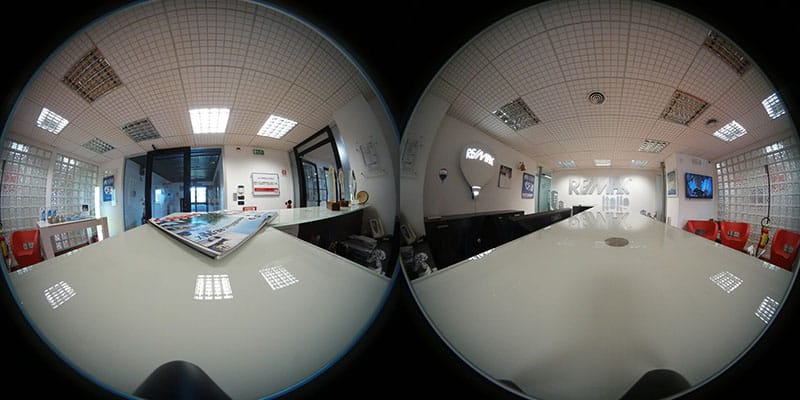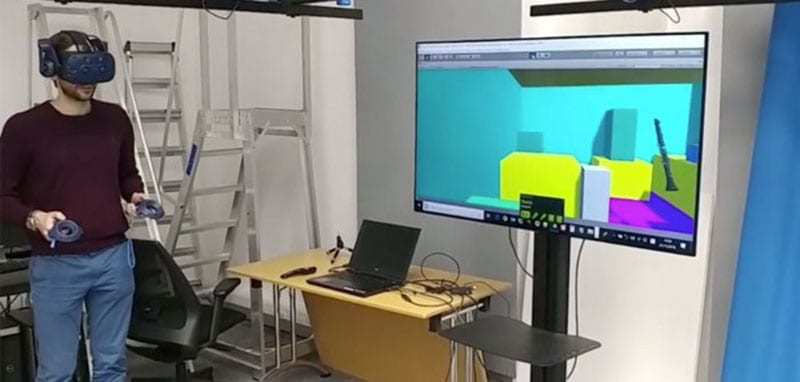Last Updated on
Are you looking to create and release a virtual reality app? Here is everything that you will need to take into consideration.

You can trust PC Guide: Our team of experts use a combination of independent consumer research, in-depth testing where appropriate – which will be flagged as such, and market analysis when recommending products, software and services. Find out how we test here.
Last Updated on
Before you even start the practical side of your app, you need to define its goals. What do you want to achieve with the app? Is it standalone or will there be sequels? You need to create a crystal clear image of what you want your app to look like before wasting time on the following steps.
We’d focus primarily on two things: what you want to get out of your app and what you want the users to experience. One of the main goals for VR creators is to create a deeper engagement with their audience. Your goals might be something to do with this, or better reach, more depth into a subject, or something else entirely.
Now you need to know where your app is going to go so that your users can access it. Will they be able to use it on a mobile, or will it be created for a VR headset? Are you going to use a provider such as Oculus, or will the app be standalone?
The worst thing you could do at this stage is to brush these questions off and say that you’re going to sort them out later in the process. The platform for your app will affect other aspects of the development, so you need to plan it now.
Platforms such as Samsung Gear and Oculus Go are standalone headsets that will reach the widest audience.
However, if you wanted to reach more professional game players with higher followings or wider knowledge, you might opt to use platforms such as Oculus Rift or HTC VIVA. You might not achieve such an impressive reach, but you’ll be focusing more on your target audience which can be more beneficial in the long run.

Once you’ve chosen the right platform, it’s time to develop your game. There are two ways that you can do this – either with an in-house team or by outsourcing.
An in-house team might be cheaper if you already have all of the resources and skills you need at your disposal, but if not outsourcing could be cheaper.
If you’re choosing to outsource your developers, there are a few more things you need to consider. Make sure that the developers you’re considering have experience in your chosen field. There’s no point using a developer who specializes in horror VR when you’re trying to create a lighthearted app instead!
You’re going to be working with your developer for much longer than you might think, so build a relationship with them and make sure that you work together well.
If you have limited in-house developing skills, you might find it beneficial to keep up a good relationship with your developer even after the app has launched. This allows you to contact them if you have any issues later on down the line.
A virtual reality app is much different from a usual mobile app, so don’t be surprised when you have a lot more work to do for the former. Mobile apps are designed to be confined by the small size of a phone screen, with limited functionality and only 2D displays.
On the other hand, VR apps need much more work. You’re designing a 3D world, with 360-degrees of space to fill. However, it’s more complicated than that, as you also need to consider your user experience when exploring your virtual reality app.
Designing the look of your app is not as simple as imagining something, telling your developer, and watching it come to life. Instead, there will be lots of amends to be made with fine-tuning and reimagined ideas to go through.
The best thing to do during this stage is to keep an open mind and listen to second opinions when voiced. It can be easy to stick to your original idea and vision, but this might not look as good as you initially thought as the final product.
If you’re using a developer with lots of experience, they should be able to tell you if something is going to look as good in practice as it does in theory or not. If you have less experience than them, you should consider listening to them and seeing if they have any other ideas on how to improve the development of your app.
Virtual reality apps are still a relatively new creation and therefore the space for them on the market is still quite sparse. This means that a lot of the apps are still very underdeveloped and simple. You can use these current apps for research and see how they work, what you like about them, and what you want to improve with your app. The aim is always to make the best app in the VR space, so consider how you are going to do this and work with your developer to make this a reality.
Test your app continuously to see what you can improve and work upon.
Finally, it’s time to release your app! No matter how many test runs you do, there’s always the possibility of glitches and troubleshooting errors coming up for your users.
Keep in contact with your developer to ensure that these kinks can be worked out as soon as they’re detected. Your users should be more understanding of the teething issues as long as you’re fixing them quickly and providing them with routine updates.
Finally, good luck and enjoy the entire process of making your VR app!
Andrew is one of three co-founders of BGFG, the parent company of PC Guide. A keen gamer and PC enthusiast, Andrew dabbles in a bit of writing sometimes - when he gets the chance to!
